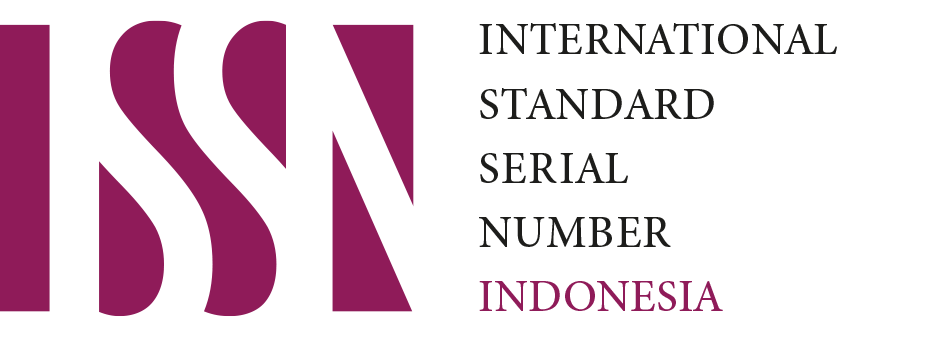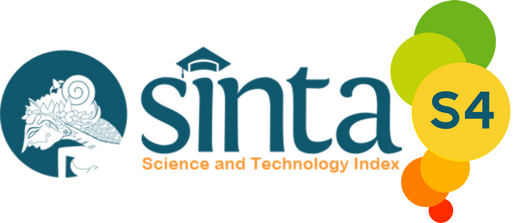Electric Stimulation Pada Luka Kaki Diabetik: Literature Review
Electrical Stimulation in Diabetic Foot Ulceration: a Literature Review
Keywords:
diabetic foot ulceration, electric stimulation, wound healing, skin perfusionAbstract
Diabetic foot ulcers occur in diabetic feet due to impaired blood circulation in the legs, nervous system disorders, and infection due to decreased body immunity. One of the new interventions that can be performed on diabetic feet is electric stimulation. Electric Stimulating aims to re-establish cell migration by mimicking a physiological current of injury (COI), which is an electric current from the center of the body to the injured nerve or muscle, or to other tissues that are stimulated. The purpose of this literature review was to analyze the application of electric stimulation for diabetic foot ulceration based on empirical studies over the last five years. The design of this research was a literature review. The method used was to search for articles with keywords that have been determined in an electronic database related to electric stimulation in diabetic foot wounds. The electronic database comes from Google Scholar, Researchgate, Wiley, EBSCO and Pubmed in the last five years as many as 8 journals that match the inclusion criteria set by the authors. The results of the analysis showed that electric stimulation on diabetic foot wounds could help wound healing and smooth peripheral tissue perfusion. This literature review can be a reference in performing nursing care and applied in the treatment of diabetic foot wounds in nursing services.
Downloads
References
WHO. Global report on diabetes [Internet]. 2016. Available from: https://www.who.int/publications/i/item/9789241565257
Damayanti S. Diabetes Mellitus dan Penatalaksanaan Keperawatan. 2017. 1 p.
Melotto G, Tunprasert T, Forss JR. The effects of electrical stimulation on diabetic ulcers of foot and lower limb: A systematic review. Int Wound J [Internet]. 2022; Available from: https://onlinelibrary.wiley.com/doi/abs/10.1111/iwj.13762
Lesmana R. Ulkus Diabetikum. Med J Kedokt Indones. 2010;
Utia Detty A, Fitriyani N, Prasetya T, Florentina B. Karakteristik Ulkus Diabetikum Pada Penderita Diabetes Melitus The Characteristics of Diabetic Ulcer in Patients with Diabetes Mellitus. Juni [Internet]. 2020;11(1):258–64. Available from: https://akper-sandikarsa.e-journal.id/JIKSH
Kusumaningrum NSD, Asriningati R. Identifikasi Risiko Diabetic Foot Ulcer (DFU) Pada Pasien Dengan Diabetes Mellitus [Internet]. 2016. p. 58–63. Available from: http://eprints.undip.ac.id/48515/1/Jurnal_Luka.pdf
Hingorani A, Lamuraglia GM, Henke P, Meissner MH, Loretz L, Zinszer KM, et al. The management of diabetic foot: A clinical practice guideline by the Society for Vascular Surgery in collaboration with the American Podiatric Medical Association and the Society for Vascular Medicine. J Vasc Surg [Internet]. 2016;63(2):3S-21S. Available from: http://dx.doi.org/10.1016/j.jvs.2015.10.003
Gershater, Annersten, Magdalena. Prevention Of Foot Ulcers in Patients With Diabetes Mellitus. 2011; Available from: https://mau.diva-portal.org/smash/search.jsf?dswid=4192
Oktorina R, Wahyuni A, Harahap, Yanti E. Faktor Yang Berhubungan Dengan Perilaku Pencegahan Ulkus Diabetikum Pada Penderita Diabetes Mellitus. REAL Nurs J [Internet]. 2018;1(3):108–17. Available from: https://www.google.co.id/url?sa=t&rct=j&q=&esrc=s&source=web&cd=&cad=rja&uact=8&ved=2ahUKEwjopNS_waX4AhWUTmwGHX01CIQQFnoECC8QAQ&url=https%3A%2F%2Fojs.fdk.ac.id%2Findex.php%2FNursing%2Farticle%2Fdownload%2F570%2F156&usg=AOvVaw38PPpns3s4t78PcI_HXy7Y
Nair HKR. Microcurrent as an adjunct therapy to accelerate chronic wound healing and reduce patient pain. J Wound Care [Internet]. 2018;27(5):296–306. Available from: https://www.magonlinelibrary.com/doi/abs/10.12968/jowc.2018.27.5.296
Yanti L, Ferasinta F, Andari FN, Saputra E. PENGALAMAN PASIEN DIABETES MELITUS DALAM PERAWATAN LUKA GANGREN (ULKUS KAKI DIABETIK). Avicenna J Ilm [Internet]. 2021;16 (3):154–64. Available from: http://jurnal.umb.ac.id/index.php/avicena/article/view/2434
Ofstead CL, Buro BL, Hopkins KM, Eiland JE. The impact of continuous electrical microcurrent on acute and hard-to-heal wounds: A systematic review. J Wound Care. 2020;29:S6–15.
Rajendran SB, Challen K, Wright KL, Hardy JG. Electrical stimulation to enhance wound healing. J Funct Biomater [Internet]. 2021;12(2). Available from: https://www.mdpi.com/1155920
Asadi MR, Torkaman G, Hedayati M, Mohajeri-Tehrani MR, Ahmadi M, Gohardani RF. Angiogenic effects of low-intensity cathodal direct current on ischemic diabetic foot ulcersA randomized controlled trial. Diabetes Res Clin Pract [Internet]. 2017;127:147–55. Available from: http://dx.doi.org/10.1016/j.diabres.2017.03.012
Iskandar I, Jaya RD, Ariani Y. Pengaruh Stimulasi Listrik Terhadap Sirkulasi Kaki Pasien Diabetes Melitus Tipe 2. Talent Conf Ser Trop Med [Internet]. 2018;1(2):355–60. Available from: https://talentaconfseries.usu.ac.id/tm/article/view/216
Snyder R, Galiano R, Mayer P, Rogers LC, Alvarez O. Diabetic foot ulcer treatment with focused shockwave therapy: Two multicentre, prospective, controlled, double-blinded, randomised phase III clinical trials. J Wound Care [Internet]. 2018;27(12):822–36. Available from: https://www.magonlinelibrary.com/doi/abs/10.12968/jowc.2018.27.12.822
Galiano R, Snyder R, Mayer P, Rogers LC, Alvarez O. Focused shockwave therapy in diabetic foot ulcers: Secondary endpoints of two multicentre randomised controlled trials. J Wound Care [Internet]. 2019;28(6):383–95. Available from: https://www.magonlinelibrary.com/doi/abs/10.12968/jowc.2019.28.6.383
Zulbaran-Rojas A, Park C, El-Refaei N, Lepow B, Najafi B. Home-Based Electrical Stimulation to Accelerate Wound Healing—A Double-Blinded Randomized Control Trial. J Diabetes Sci Technol [Internet]. 2021; Available from: https://journals.sagepub.com/doi/abs/10.1177/19322968211035128
Zulbaran-Rojas A, Park C, Lepow B, Najafi B. Effectiveness of Lower-Extremity Electrical Stimulation to Improve Skin Perfusion. J Am Podiatr Med Assoc [Internet]. 2021;111(6):1–11. Available from: https://www.google.com/url?sa=t&rct=j&q=&esrc=s&source=web&cd=&cad=rja&uact=8&ved=2ahUKEwj1vJenze33AhXmTWwGHRGDDLwQFnoECAMQAw&url=https%3A%2F%2Fpubmed.ncbi.nlm.nih.gov%2F33656524%2F%23%3A~%3Atext%3DResults%253A%2520Skin%2520perfusion%2520pressure%2520incr
O’Connor T, Moore Z, Patton D, Wilson P, Gillen C, Hughes M, et al. Combined use of modulated ultrasound and electric current stimulation for diabetic foot ulcers: A case series. J Wound Care [Internet]. 2017;26(11):632–40. Available from: https://www.magonlinelibrary.com/doi/abs/10.12968/jowc.2017.26.11.632
Armstrong DG, Boulton AJM, Bus SA. Diabetic Foot Ulcers and Their Recurrence. N Engl J Med. 2017;376(24):2367–75.
Medical Xpress. Study Tests Range of Electrical Frequencies That Help Heal Chronic Wound [Internet]. 2014. Available from: https://tinyurl.com/ybvjtjqs
O’Connor T, Moore Z, Patton D, Wilson P, Gillen C, Hughes M, et al. Combined use of modulated ultrasound and electric current stimulation for diabetic foot ulcers: A case series. J Wound Care [Internet]. 2017;26(11):632–40. Available from: https://www.google.com/url?sa=t&rct=j&q=&esrc=s&source=web&cd=&cad=rja&uact=8&ved=2ahUKEwiynIi1ze33AhWFSGwGHXtIBrAQFnoECAIQAQ&url=https%3A%2F%2Fpubmed.ncbi.nlm.nih.gov%2F29131756%2F&usg=AOvVaw2n1ZG0zWz2DLme_kORlQfy
Published
Versions
- 2022-10-22 (4)
- 2022-09-20 (3)
- 2022-09-20 (2)
- 2022-09-09 (1)
How to Cite
Issue
Section
Copyright (c) 2022 JURNAL ILMU DAN TEKNOLOGI KESEHATAN TERPADU

This work is licensed under a Creative Commons Attribution-NonCommercial-ShareAlike 4.0 International License.












